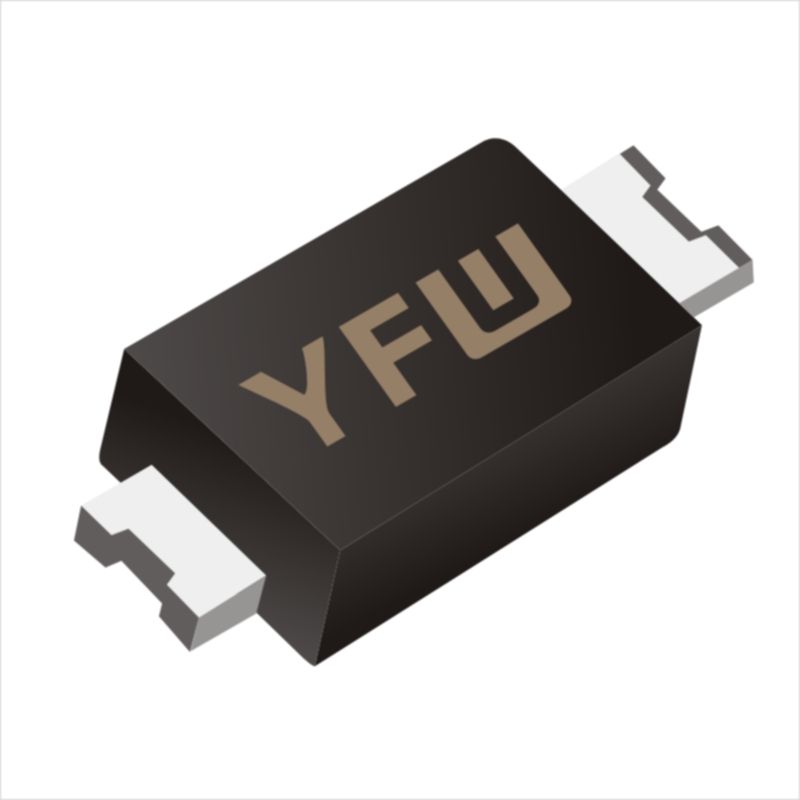The body diode in SJ MOSFETs operates as a parasitic p-n junction between the p-body region and the n-drift region. Its performance is constrained by two key issues:
High Reverse Recovery Charge (Qrr): The large p-n junction area in SJ structures results in significant minority carrier injection during forward conduction, leading to excessive charge storage. During reverse recovery, this stored charge causes high peak reverse current (Irr) and prolonged recovery time (Trr), increasing switching losses and EMI.
Hard Reverse Recovery: The abrupt termination of the reverse current creates voltage spikes and oscillations due to the low softness factor (S), which degrades system reliability and requires additional snubber circuits.
YFW addresses these challenges through cutting-edge design and manufacturing techniques:
YFW’s SJ MOSFETs integrate dual Schottky contacts in the cell region—an n-type Schottky contact on the n-pillar and a p-type Schottky contact on the p-pillar. This configuration suppresses minority carrier injection during forward conduction, reducing Qrr by up to 66.2% compared to conventional SJ MOSFETs. The Schottky junctions divert current away from the p-n junction, minimizing charge storage and enabling faster recovery.
By introducing an n-type field termination region (FTR) with higher doping concentration in the n-buffer layer, YFW’s design prevents premature depletion of the drift region during reverse recovery. This approach increases the softness factor (S) by 137.5% while maintaining low on-resistance (Rds(on)). The FTR also mitigates voltage overshoots and oscillations, improving system stability.
YFW employs advanced ion implantation and epitaxial growth techniques to optimize carrier lifetimes in the drift region. By reducing the recombination time of minority carriers, Qrr is minimized without compromising Rds(on) or leakage current. This method ensures a balance between switching speed and conduction efficiency.
Precise control of doping concentrations in the p/n pillars and buffer layers enhances charge balance, reducing parasitic capacitances and improving switching performance. YFW’s SJ MOSFETs achieve a 30% reduction in gate charge (Qg) and gate-drain charge (Qgd), enabling faster turn-on/off transitions and lower driver power requirements.
YFW’s optimized SJ MOSFETs demonstrate exceptional body diode characteristics:
Qrr ≤ 1.0 μC and Trr ≤ 150 ns in 600V devices, suitable for high-frequency PFC and LLC converters.
Softness Factor (S) ≥ 0.5, minimizing voltage overshoots in hard-switching applications.
Low Forward Voltage Drop (Vsd ≤ 0.8V), reducing conduction losses in bidirectional power systems.
These advancements make YFW’s SJ MOSFETs ideal for:
EV Chargers and DC-DC Converters: Enabling high-efficiency power conversion with reduced thermal management complexity.
Solar Inverters and Energy Storage Systems: Supporting bidirectional current flow and grid integration.
Industrial Motor Drives: Enhancing reliability in harsh environments through robust reverse recovery performance.
YFW’s focus on body diode optimization in SJ MOSFETs reflects its commitment to delivering state-of-the-art power solutions. By combining dual Schottky contacts, field termination engineering, and carrier lifetime control, YFW addresses the limitations of traditional SJ structures, offering devices with ultra-low Qrr, high softness, and improved efficiency. These innovations position YFW as a leader in enabling next-generation power electronics, where reliability and performance are paramount.
For technical specifications and application support, visit YFW Diode or contact our engineering team 